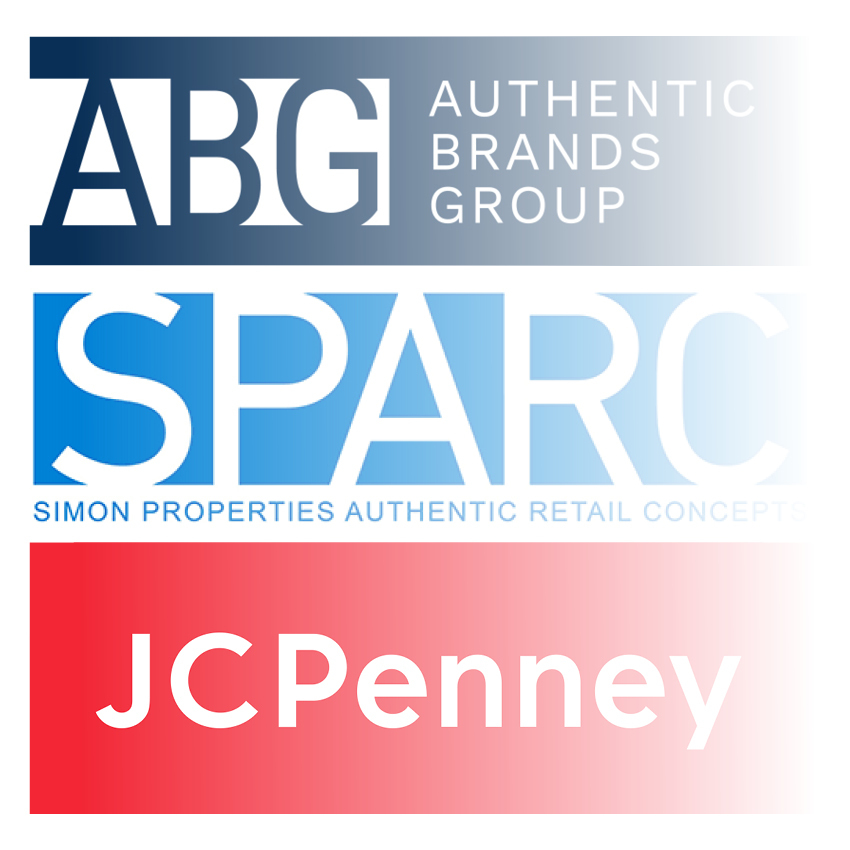Great brands don’t die, they just fade away. And where do they go to expire? Authentic Brands Group, of course. Talk about rolling up a bunch of losers in fading-away mode: ABG partnered with another fade-away, Simon Properties (creating SPARC – Simon Properties Authentic Brands Retail Concepts). Now CEO David Simon is talking about putting ABG’s dying brands into an even more impressive fadeout: JC Penney. That deal with the ABG brands may indeed be an anchor (but of the reverse kind from what it used to mean) that will take the entire enterprise down.
Negative Synergy
In the middle of this conceptual downward vortex model, ABG has closed on an exclusive deal with Klarna, the current king of BNPL (buy now, pay later in four interest-free installments). You only need to take a guess about how I describe this move later in this article. Wait, there’s more. ABG is also exploring going public as soon as this year (more on that later as well).
[callout]Here is what failure looks like: Acquire a bunch of once-cool brands on the cheap, license third parties to run them, further license them out to a mall developer who then shovels them into hundreds of dying JC Penney stores that happen to be in dying malls.[/callout]
My head is spinning but I don’t want to lose my train of thought, leaving you muddled. All of this is just plain over-the-top audacious. ABG has the audacity to go for an IPO after putting its fading brands into a fading JCP anchor, already located in many older fading malls. This does not look like just fading away. It reads to me more like serial self-destruction of all three brands trapped in an enormous negative synergy.
Yes, it does take a long time for multibillion-dollar companies to fade into death. Many of them get propped up on life support along the way down. Eddie “fast buck” Lampert stuck Sears in an oxygen tank and managed it down for a quarter-century. The Gap started fading a couple of decades ago, yet one CEO after another has managed to keep it away from the grim reaper — just barely. Gap just did a deal with Walmart giving them exclusivity for a home essentials brand dubbed Gap Home. This is a head-scratcher for another article. It looks like the Gap is throwing yet another tactic at the wall, hoping it will stick.
Falling Stars
Many old brands are fading away. As I said, many of them are in ABG’s stable: Nautica, Lucky Brand, Brooks Brothers, Forever 21, Eddie Bauer (all a part of SPARC), which I recently shouted out as a losing proposition. It’s also been reported that ABG made a $1 billion offer on the Reebok brand. ABG is becoming an expanding list of dying brands finding their way into its nursing home, all acquired at fire-sale prices.
Who, and where is the Consumer?
This is the $64,000 question that, in my opinion, neither Mr. Simon nor ABG CEO, Mr. Salter have answered. An analogy comes to mind as to what these two executives seem to expect of next-gen consumers (who are now the largest cohort they must appeal to). It’s like converting the Simon malls into giant movie theatres, streaming oldies like Singin’ in the Rain, W.C. Fields and Mae West originals, and Mr. Smith Goes to Washington, and then expecting the next-gen to race to those malls as destinations of the new cool. Even worse, the impresarios of SPARC expect these young customers to spend a lot of money in these malls, when they’d rather wait in line to buy Supreme or stream movies for free in the comfort of their homes.
Nostalgia aside, next-gens view AGB’s brands as their parents’ or grandparents’ brands. Second, malls are so last century. Third, only in your dreams would young shoppers race to the mall to check out JC Penney and all those old brands for a cool experience. Hey, Mr. Simon and Mr. Salter, your whole premise is at risk because there has not been the long and deep process necessary for repositioning those brands to younger consumers.
Bad Idea
I may be exaggerating to make my point. But here is what failure looks like: Acquire a bunch of once-cool brands on the cheap, license third parties to run the operation of creating and merchandising their lines. Then further license them out to a mall developer (not a retailer) who then shovels them into hundreds of dying JC Penney stores that happen to be in dying malls (still paying for the space they are in). Next, place those brands into the countless number of empty spaces vacated by previous mall tenants.
And by the way, I have not forgotten ecommerce. However, given the SPARC model with its strategy of pumping up brands primarily in stores and malls, I don’t see how any of their ecommerce platforms are going to make them any more appealing to next-gens.
Next-Gen Finance
ABG likely views Klarna, the BNPL leader in flexible payment models, as a next-gen asset. Which is why they have an exclusive deal with Klarna across ABG and SPARC’S ecommerce portfolio of brands. In my opinion, this deal will not move the needle towards making the brands cool and could erode the cool-factor perception of Klarna in the process.
A Gigantic Off-Price Model
Envisioned by SPARC, if you put all the pieces of this big puzzle together, maybe there is a successful end game for these fading brands, malls, and JC Penney. Maybe the combination of all three should be promoted as a giant off-price model. Maybe that is the strategy. After all, the current off-price sector, dominated by the TJX group, Burlington, and Ross Stores, is booming. And post-pandemic, it’s expected to continue.
The question at the end of the day for ABG and SPARC: Do their brands (including JCP and the malls) qualify as “great” brands or “once-great” brands that savvy young shoppers will pick up cheaply on the fly?
Sadly, SPARC and ABG may be able to manage all of those fading brands downward for a long time before they go kaput. Eddie Lampert has been doing it to Sears along with a bunch of serial CEOs who have been doing the same to the Gap.
Maybe it’s not sad at all. Maybe a slow death knell is better than an overnight collapse. Just maybe this is a smart business strategy they cooked up; it’s a lot easier and faster than repositioning them back to the cool they once were.
But honestly. Is this mess worthy of an IPO?




